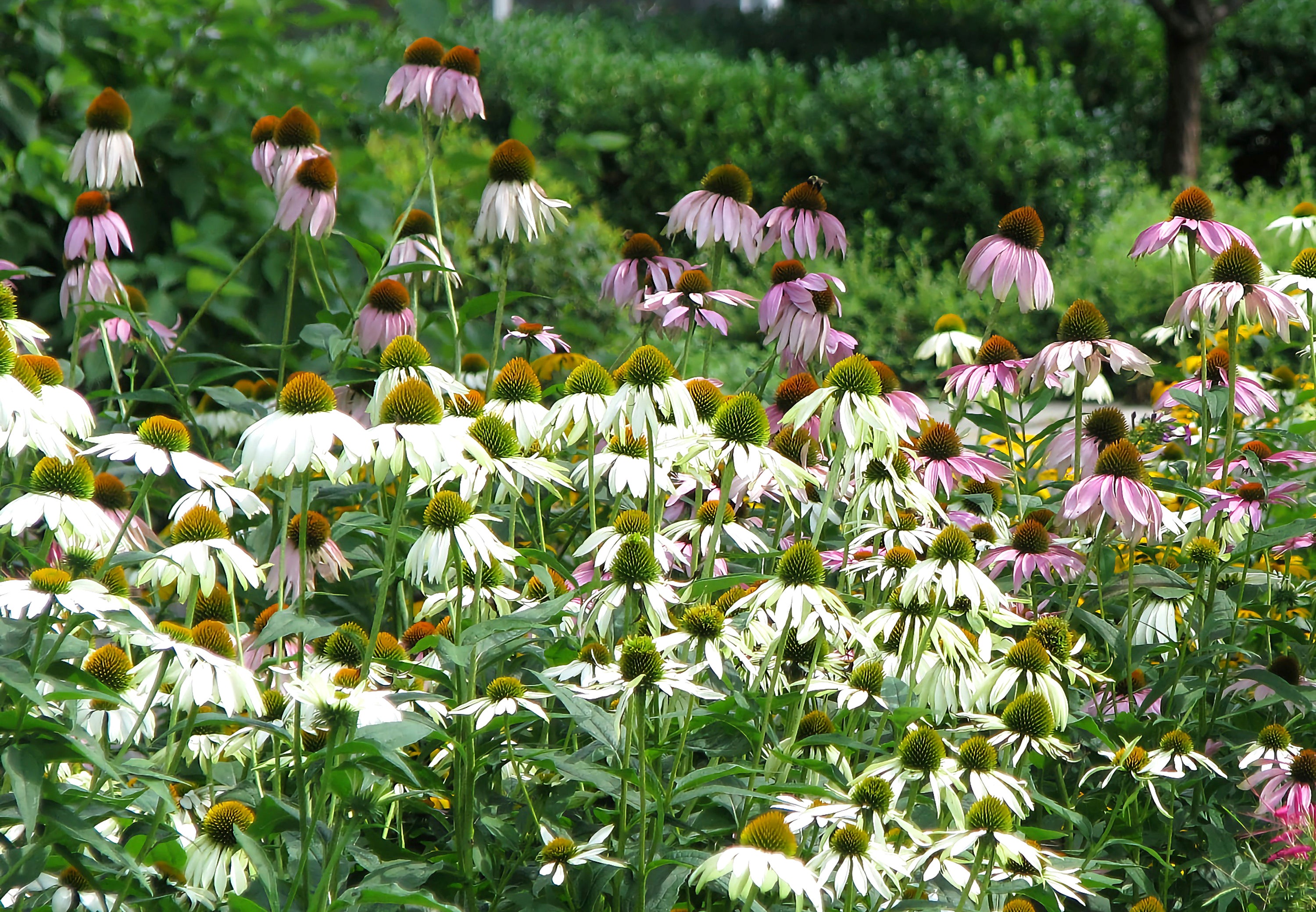Gardening when it's dry: Prep soil, select plants wisely
Is your summer a summer of drought

Is your summer a summer of drought? No need to sit back and accept what Mother Nature offers — you can soften the impact of dry weather on your garden.
The time to start preparing for dry conditions is long before they occur, but plans made now will help down the road. Prepping begins with the soil. Any type of organic material -- leaves, straw, peat moss, compost, manure, sawdust, grass clippings -- mixed into the soil helps garden plants weather dry periods. (“Organic materials” are things that are or once were living.)
And do mix these materials into the soil; don’t bury them beneath it. In sandy soils, organic matter acts like a sponge to hold water. In clay soils, organic matter will open up air spaces and promote far-reaching root systems.
While plants are growing, these same organic materials laid on top of the ground as mulch prevent evaporation of water. (Except for peat moss, which dries to form a layer impervious to rain.) Replenish the mulch every year and you don’t even have to dig it in. Earthworms will drag it down into the soil. In fact, I no longer dig organic materials into my soil. Not for 30-plus years.
Virtually any material can be laid on top of the soil to check evaporation. Black plastic film or landscape fabric is commonly used. And a friend carpets his ground with, what else? Carpet! But these inorganic materials have drawbacks, and confer to the soil none of the myriad other benefits that organic materials do, such as promoting beneficial microbes, helping to feed plants, and improving the structure of the underlying soil.
SOME PLANTS TOLERATE DROUGHT
Turning now to the plants: If you live where summers are dry, you might grow only drought-resistant plants. No need to limit yourself to cactii and yucca, though.
Many familiar garden plants are at least somewhat drought-tolerant. Those include shrubs like juniper, privet, potentilla, buckthorn, sweetfern, ninebark and nannyberry viburnum. Among annuals, you could choose from cosmos, marigold, nicotiana, portulaca, sunflower, zinnia, and many of those used for dried flowers, such as celosia, gomphrena, strawflower and statice. Drought-tolerant perennials include yarrow, butterfly weed, coreopsis, poppies, coneflower, sedum and baby’s breath.
Ornamental grasses such as pampas grass and blue fescue also are drought-tolerant. Most lawn grasses survive drought well by going dormant as they await moist weather, but they are greedy consumers of water if you want them to stay green.
No need to forsake vegetables. Cucumbers melons, okra, squash and even tomatoes will get along with just enough water to plump up their fruits. Drought actually improves tomato flavor.
USE AND CONSERVE WATER WISELY
In addition to plant choice, the way you grow them can help mitigate drought.
Cutting down on fertilizer cuts down on water use, because smaller plants use less water. Fertilizer can actually worsen drought conditions by drawing water from plants in the same way that salty potato chips draw water from your lips.
When your time or your water is limited, give water first to plants that need it most. Give vegetable and flower transplants and newly planted trees and shrubs first dibs on water. Also water plants that are not drought-tolerant, like lettuces, delphiniums and roses.
Generally, when you do water, apply a lot infrequently. “A lot,” here, translates to 1 inch of water from a sprinkler as measured in a straight-sided container. This amount is the same, if you’re watering by hand, as three-quarters of a gallon per square foot, once a week.
Alternatively, apply just a little water, but do it frequently. This is the essence of “drip irrigation,” where special emitters automatically drip water next to each plant. Besides moving down, water also moves horizontally in the soil by capillary action. So there's no need for each emitter to be right next to a plant. The more clay in a soil, the further emitters can be from a thirsty plant — even a couple of feet away in a soil high in clay.
Supplement tap water with water caught from rooftops in barrels or cisterns, or diverted from your kitchen sink drains. Mounding up the soil in small catch basins around trees and shrubs traps rainwater.
Even if slugs are now frolicking in dampness and rain, your garden could turn dry in a few weeks. Be prepared.
___
Lee Reich writes regularly about gardening for The Associated Press. He has authored a number of books, including “Weedless Gardening” and “The Pruning Book.” He blogs at http://www.leereich.com/blog. He can be reached at garden@leereich.com.